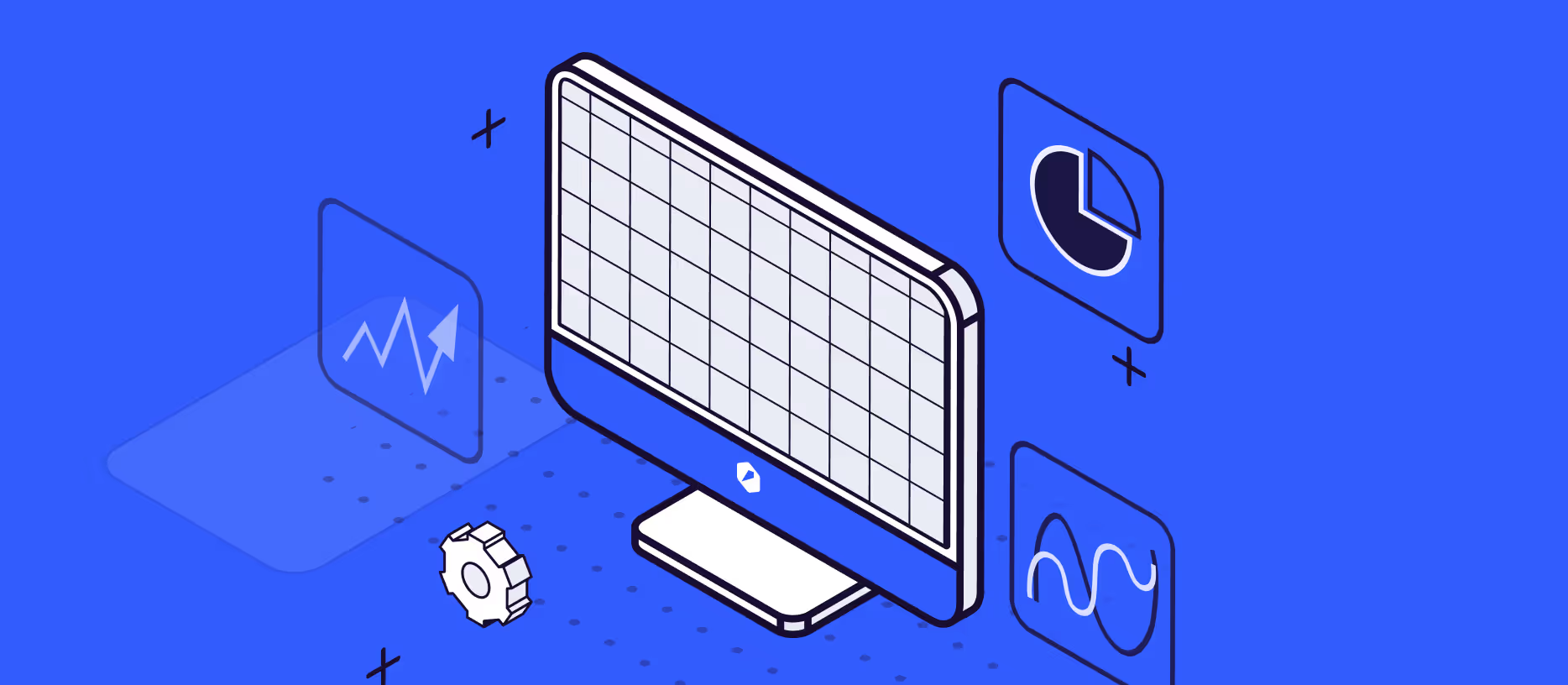Outbound lead generation involves actively reaching out to potential customers rather than waiting for them to come to you. If you’re searching for this term, you likely want to understand how it can drive growth for your business. Through methods like cold calls, emails, and social media engagement, outbound lead generation can help your company connect with decision-makers, explore new market segments, and enhance your brand’s visibility. This article will guide you through the top strategies to make your outbound efforts successful.
Key Takeaways
- Outbound lead generation is a proactive strategy that involves directly reaching out to potential customers through various channels, enhancing brand awareness and engagement.
- Key strategies for effective outbound lead generation include cold calling, personalized outreach via emails and social media, and utilizing multi-channel approaches to maximize engagement.
- Avoid common pitfalls such as poor targeting and generic messaging; instead, focus on personalization and problem-solving to improve lead conversion rates.
Understanding Outbound Lead Generation
.jpg)
Outbound lead generation is a proactive method where businesses reach out directly to potential customers. Unlike inbound lead generation, where potential customers come to you, outbound lead generation services involve initiating contact through various means such as cold calls, emails, and social selling. This approach allows companies to build a pipeline that moves, initiating conversations and generating interest in their products or services through outbound lead generation work.
The goals of outbound lead generation are multifaceted. Not only does it connect businesses with decision-makers, but it also explores new customer segments and significantly enhances brand awareness and engagement with prospects. Outbound lead generation enables companies to generate leads and build relationships with potential customers who might not have discovered them otherwise.
What Defines an Outbound Lead?
An outbound lead is identified through proactive outreach methods such as cold calling, cold emailing, and social selling. These leads are potential customers who have been contacted by sales representatives and have expressed some level of interest in a company’s offerings. The initial contact is crucial, as it allows sales reps to qualify these leads and determine their potential for conversion, which is part of the main outbound sales activities.
The qualification process during the initial contact involves assessing the lead’s needs, challenges, and readiness to make a purchase. This ensures that the sales team focuses on high-quality leads that are more likely to convert, thereby optimizing the outbound lead generation process and generating sales qualified leads within the sales process.
Defining what constitutes an inbound and outbound lead is crucial for creating effective inbound vs outbound lead generation strategies for generating leads to generate outbound leads and inbound and outbound leads.
The Outbound Lead Generation Process
The outbound lead generation process involves creating repeatable systems that facilitate the conversion of prospects into qualified leads. This structured approach ensures scalability and effectiveness in converting prospects. The process typically includes precise targeting, proper outreach channels, and smart automation to reach the right leads at the right time.
Successful outbound lead generation relies on collaboration between an outbound marketing team and sales and marketing teams. Key components include:
- Sales development representatives (SDRs), business development managers (BDMs), and marketing teams working together to identify leads and advance them through the sales funnel.
- Effective lead qualification systems.
- A mix of marketing and sales roles.
These are crucial components of a successful outbound lead generation strategy.
Best Outbound Lead Generation Strategies
.jpg)
Outbound lead generation is a proactive approach to engage potential customers who may be unaware of a product or service. The effectiveness of this approach lies in the strategies employed to identify and engage potential customers. Seven key outbound lead generation strategies include an outbound strategy:
- Cold calling
- Outbound email
- Social selling
- Multi-channel outreach
- PPC
- Content syndication
- Cold approaching. Outbound tactics are essential for maximizing the impact of these strategies, just as inbound marketing plays a crucial role in attracting customers. Additionally, utilizing outbound lead generation techniques can further enhance these efforts.
Effective strategy creation and execution are vital for generating high-quality outbound leads. These strategies require a well-defined process for identifying and engaging potential customers, which can be significantly enhanced through the use of lead generation software and automation tools.
Speed, intent, and personalization are key elements that provide an edge in outbound lead generation for future growth.
Cold Calling Techniques
Cold calling remains a primary outbound lead generation strategy, allowing businesses to target their Ideal Customer Profiles (ICP). To enhance the effectiveness of cold calls and phone calls, it is recommended to send a cold email 1–2 days prior to the cold call to prepare the prospect for the conversation. When making cold calls, the focus should be on helping the prospect solve their problems rather than just meeting sales quotas.
Advanced calling software can streamline outreach efforts and improve engagement by:
- Integrating features like power dialers and real-time coaching to enhance the cold calling process.
- Using insights gathered during cold calls to help gauge purchase intent.
- Improving the overall effectiveness of the strategy.
.jpg)
Crafting Impactful Outbound Emails
Impactful outbound emails are a cornerstone of a successful lead generation strategy. These emails should focus on relevance, personalization, and brevity to capture the prospect’s attention. Highlighting how the product adds value to the prospect’s business can significantly improve engagement.
Personalization builds trust and creates a one-to-one communication feel, essential in outbound messaging. AI can enhance personalization, reducing the chance of emails being marked as spam.
Additionally, A/B testing subject lines can significantly increase the open rates of cold emails, ensuring that your message reaches the intended audience.
Leveraging Social Selling
Social selling focuses on building meaningful relationships with potential customers, primarily on platforms like LinkedIn. Instead of just selling, social selling emphasizes connecting with and nurturing leads through personalized outreach and connection requests.
Best practices for LinkedIn outreach include:
- Sending personalized messages and making meaningful connections, with the potential to initiate multiple conversations weekly.
- Sending 20–30 personalized connection requests daily to maximize engagement and help build a strong network of potential leads.
- Using tools like the Kaspr LinkedIn Chrome Extension to streamline social selling efforts.
Multi-Channel Outreach Approach
A multi-channel outreach marketing strategy boosts engagement by combining various communication methods to cater to diverse preferences. This marketing tactics strategy can significantly increase reply rates and enhance brand visibility by reaching prospects through multiple touchpoints, including promotional campaigns.
Common channels used in multi-channel outreach include:
- Social media
- Content marketing
- Email campaigns
- Blogs
- Advertisements
Sales representatives must adapt to rapidly changing channels to effectively engage leads, as new platforms may emerge, just like a sales rep must stay updated.
Multi-channel outreach, whether online, on social media, through email, or in print, caters to diverse preferences and maximizes outreach efforts.

Utilizing Pay-Per-Click (PPC) Advertising
Pay-Per-Click (PPC) advertising is a powerful strategy that quickly enhances brand visibility. In PPC paid advertising campaigns, performance marketers help businesses manage paid advertising campaigns by paying for each click on their online advertisements, targeting prospects who exhibit buying signals. This method allows companies to generate leads rapidly by placing their ads in front of a highly targeted audience.
Effective management of PPC campaigns is crucial to maximize conversions and avoid overspending. Successful PPC campaigns rely on factors such as keyword optimization, effective organization of campaigns, and the creation of optimized landing pages.
Careful monitoring of cost-per-lead and conversions ensures that PPC advertising efforts yield high-quality leads.
Content Syndication for Lead Generation
Content syndication is an effective strategy for distributing valuable content across multiple platforms to attract leads. Common types of content used in syndication include:
- Whitepapers
- Presentations
- Infographics
- Blogs
- Case studies Sharing content on various channels extends reach and supports lead generation activities.
Content syndication helps generate leads by distributing valuable information that resonates with the target audience. Platforms commonly used for content distribution include social media platforms, email, Facebook, LinkedIn groups, forums, and subreddits. This approach not only attracts leads but also enhances brand visibility and credibility in the industry.
Creative Prospecting Methods
Creative prospecting methods can significantly differentiate cold outreach efforts and capture the attention of potential leads. One such method is cold approaching, which involves initiating contact in person with prospects. This personal interaction can leave a lasting impression and set your outreach apart from standard communication methods.
Personalized video messages, gaining popularity for their tailored and engaging nature, are another innovative approach. Building trust is vital for outbound sales, and creative methods like personalized videos help connect with prospective clients.
Personal branding through platforms like LinkedIn can also improve visibility and attract prospective buyers through effective brand marketing.
Tools to Enhance Outbound Lead Generation Efforts
.jpg)
Sales automation software plays a vital role in outbound lead generation by assisting in sending email messages to engage prospects within the sales pipeline. Multi-channel outreach benefits businesses targeting crowded markets or busy decision-makers by maximizing visibility. Essential tools for proactive customer outreach include CRM systems and other specialized sales technologies designed to optimize engagement.
AI and sales tools can enhance efficiency in outbound lead generation. Tools like Saleshandy and ZoomInfo help identify high-quality leads, uncover projects, and orchestrate multi-channel campaigns to optimize outreach. The selection of tools for outbound lead generation is heavily influenced by the specific tactics a business is employing.
Prospecting and List-Building Tools
A thorough, up-to-date B2B contact database is crucial for effective email prospecting. Key points to consider include:
- An accurate B2B email list is crucial for outbound email effectiveness.
- Before using lead data, it is vital to clean and enrich it to ensure accuracy.
- Specialized providers and proprietary sources can provide lead data for outbound lead generation.
Tools like Saleshandy, which offers a B2B lead database of over 700M+ global contacts, and Kaspr, with its LinkedIn Chrome Extension, are useful for data gathering and verification.
Integrating outbound lead generation tools with other marketing tools maximizes effectiveness and ensures seamless operations.
Outreach and Engagement Platforms
Advanced data systems and automation tools significantly enhance the efficiency of outbound lead generation. For these tools to work effectively, they need to integrate with a CRM system, ensuring that outreach management is streamlined and effective. Platforms like Dialpad, which provide advanced calling features and real-time coaching, enhance customer experiences during outreach communication.
AI-powered tools like Leadspicker, Heyreach or Instantly can help personalize outreach, increasing engagement with potential leads. Sales development reps play a key role in researching and qualifying leads before outreach, ensuring that the right prospects are targeted.
Integrating intent data into workflows can trigger automated outreach based on inferred interest levels, further optimizing the process.
.jpg)
Analytics and Optimization Software
Analytics play a crucial role in measuring performance and maximizing conversion rates in outbound lead generation. Using intent signals like opened emails and clicked links helps score leads effectively, providing valuable insights for outreach. Tracking key metrics such as replies, meetings booked, and revenue per campaign ensures continuous improvement.
Combining data from multiple sources allows for a comprehensive analysis, revealing subtle clues about buyer intent. Predictive analytics can anticipate the needs of potential customers, enhancing the effectiveness of outbound lead generation strategies.
Tools like Chorus, a conversation intelligence tool, can enhance understanding of customer interactions and improve outreach efforts.
Integrating Buyer Intent Data
Buyer intent data is a valuable asset in outbound lead generation, as it helps determine the genuine interest and decision-making authority of prospects. Signals from interested prospects lead to higher conversion rates, making intent-based targeting a key component of effective outbound marketing. Predictive analytics can further optimize strategies by anticipating potential customer needs.
By leveraging intent-based targeting, businesses can engage leads based on real actions, improving open and reply rates. This targeted approach ensures that outbound efforts are focused on prospects with a higher likelihood of conversion, maximizing the efficiency of lead generation campaigns.
Types of Buyer Intent Data
Buyer intent data can be categorized into three tiers, each representing different levels of sales readiness. High-intent leads, which show strong buying signals, should be prioritized to increase the chances of conversion. Direct communication of interest, projects, or problems provides a stronger indication of a prospect’s readiness to buy.
This data indicates lead quality, helping to identify the most promising prospects. Platforms like ZoomInfo combine proprietary data with partner sources to enhance the value of buyer intent data, providing a comprehensive view of potential customers.
Operationalizing Buyer Intent
To effectively utilize buyer intent signals, businesses must operationalize these signals within their outbound lead generation processes. Platforms like the GTM Play from ZoomInfo can automate outreach triggered by external moves related to buyer intent, ensuring timely and relevant communication.
When spikes in intent data are detected, entire outbound marketing campaigns can be automated to respond promptly. By prioritizing leads that exhibit strong buying signals based on intent data, marketers can enhance their outbound strategies and improve conversion rates.
Continuous Optimization with Intent Data
Utilizing buyer intent insights can significantly improve conversion rates and refine audience targeting in outbound marketing strategies. By using a mix of data types for buyer intent, businesses can gain a more accurate picture of potential customers and reveal subtle clues about their needs and interests.
Continuous optimization involves regularly analyzing these insights and adjusting strategies accordingly. This ensures that outbound efforts remain effective and aligned with the evolving needs of the target audience, maximizing the impact of lead generation campaigns.
.jpg)
Common Mistakes in Outbound Lead Generation
Common mistakes in outbound lead generation can lower conversion rates and ultimately reduce revenue. Misalignment between sales and marketing teams and outbound marketing teams often leads to wasted resources on the wrong leads. Targeting wrong leads and incorrect messaging are significant contributors to ineffective outreach efforts.
Effective outbound communication hinges on problem-centric messaging tailored to the lead’s needs. Focusing on the wrong pain points can weaken outreach effectiveness, as leads may not respond to issues they feel they have already solved. Identifying and solving specific problems that your product addresses for your Ideal Customer Profile (ICP) increases engagement.
Poor Targeting and Segmentation
A significant error in outbound lead generation is casting a wide net by attempting to reach too many potential leads, often leading to ineffective messaging. Targeting everyone means targeting no one. Creating an Ideal Customer Profile (ICP) is the first step to prioritize outbound leads and ensure effective targeting.
An Ideal Customer Profile should focus on the pain points and challenges faced by the target audience. Identifying your ideal customer profile is vital for effective prospecting and targeting qualified leads, including prospective customers.
Lack of Personalization
Personalized outreach effectively engages potential customers and increases response rates. Familiarity with the outreach improves trust, making leads more likely to respond. Generic messaging that doesn’t resonate with potential leads is a common outbound lead generation mistake.
Overall, personalized communication strategies lead to better engagement outcomes compared to generic approaches. Tailoring messages to address the specific needs and challenges of leads ensures that your outreach efforts are relevant and impactful.
Ineffective Follow-Ups
The purpose of follow-ups in outbound lead generation is to nurture non-responders, keeping them engaged. Hot leads should be nurtured with additional value to maintain their interest and move them closer to conversion. Reevaluating the approach becomes essential when conversions do not align with buyer intent data.
Inbox rotation can increase daily email volume for sales reps while avoiding the risk of excessive, unprepared emails that raise spam risk. Monitoring outbound campaigns is key to maximizing conversion rates and understanding performance.
.jpg)
Mastering Outbound Lead Generation: Practical Tips
Mastering outbound lead generation requires a mix of:
- Research
- Outreach
- Follow-up
- Conversion steps
An effective outbound lead generation strategy can significantly improve response rates compared to one-size-fits-all communication. Regular follow-ups are crucial for keeping non-responsive leads engaged and nurturing potential opportunities.
Insufficient follow-up can lead to lost opportunities, as many leads require multiple touchpoints before converting. Expecting immediate success in outbound lead generation can lead to premature strategy changes and frustration.
Focusing on personalized outreach and regular follow-ups optimizes outbound lead generation efforts.
Understanding Your Ideal Customer Profile (ICP)
An Ideal Customer Profile (ICP) includes key characteristics such as industry, job title, company size, and specific pain points that the product or service addresses. Sales representatives should thoroughly understand their ICP to tailor their outreach effectively.
Segmenting leads based on different personas improves message targeting and reply rates.
Focus on Solving Problems, Not Selling Products
Messaging should emphasize the specific solutions your service offers to address the challenges faced by leads. Focusing on solving problems helps in establishing trust and rapport with potential leads. Understanding leads’ challenges enables more targeted and effective communication strategies.
A problem-solving perspective fosters stronger relationships and longer engagement with leads.
.avif)
A/B Testing and Campaign Iteration
A/B testing involves experimenting with different approaches in outbound campaigns to determine which ones yield the best results. When launching outbound campaigns, it is recommended to start small and test 2–3 variants to identify what resonates most with leads.
Continuous improvement in outbound campaigns and inbound campaigns relies on analyzing data from responses and engagement metrics, allowing for informed adjustments. It’s crucial to focus on solving one problem at a time in crafted messages, ensuring clarity and improving response rates.
Summary
In conclusion, outbound lead generation strategies are essential for proactive engagement with potential customers. By understanding the outbound lead generation process, employing best practices, leveraging the right tools, and integrating buyer intent data, businesses can significantly enhance their lead generation efforts. Avoiding common mistakes and focusing on personalized outreach and regular follow-ups are crucial for success. Implement these strategies, and you’ll be well on your way to unmatched growth.
Frequently Asked Questions
What is an outbound lead?
An outbound lead is a potential customer identified through proactive outreach methods like cold calling and cold emailing, who shows interest in a company's products or services during the initial contact. This approach highlights the importance of actively engaging with prospects to generate interest and potential sales.
How can I improve my cold calling techniques?
To improve your cold calling techniques, target Ideal Customer Profiles and focus on resolving the prospect's problems. Additionally, consider sending a cold email before the call and utilizing advanced calling software for enhanced efficiency.
Why is personalization important in outbound emails?
Personalization in outbound emails is crucial as it fosters trust and creates a more personalized connection, leading to significantly higher response rates than generic messages. Tailoring your communication ensures recipients feel valued and increases engagement. It's not that hard creating personalised messages anymore - when you have the right tool. For example Leadspicker offers many options how to easily create personalised messaged with few clicks.
What are the benefits of using a multi-channel outreach approach?
Utilizing a multi-channel outreach approach significantly enhances engagement by increasing reply rates and brand visibility, while also accommodating diverse audience preferences. This strategy ensures a more effective connection with potential clients.
How can buyer intent data improve outbound lead generation?
Buyer intent data significantly enhances outbound lead generation by identifying prospects' genuine interest and decision-making authority, which in turn boosts conversion rates. By utilizing intent-based targeting and predictive analytics, your outreach strategies become more effective and focused.

.jpg)




